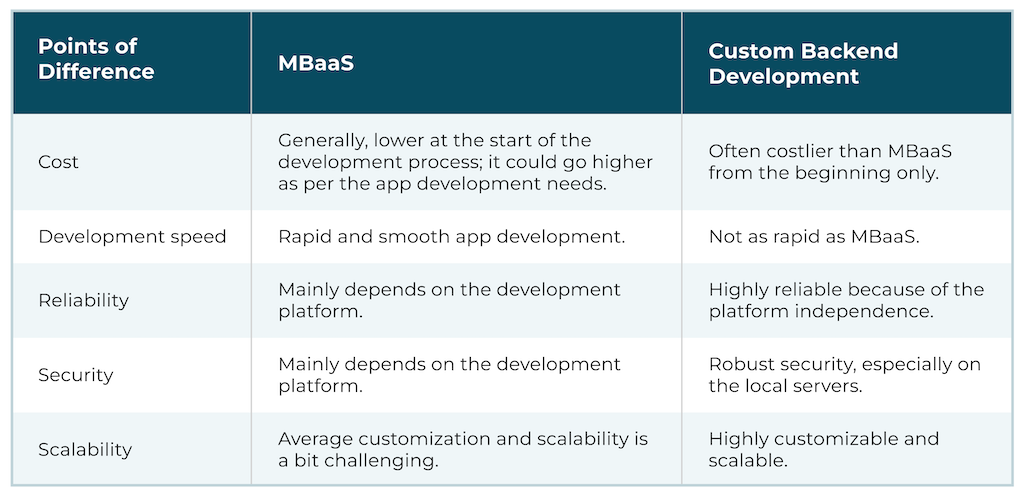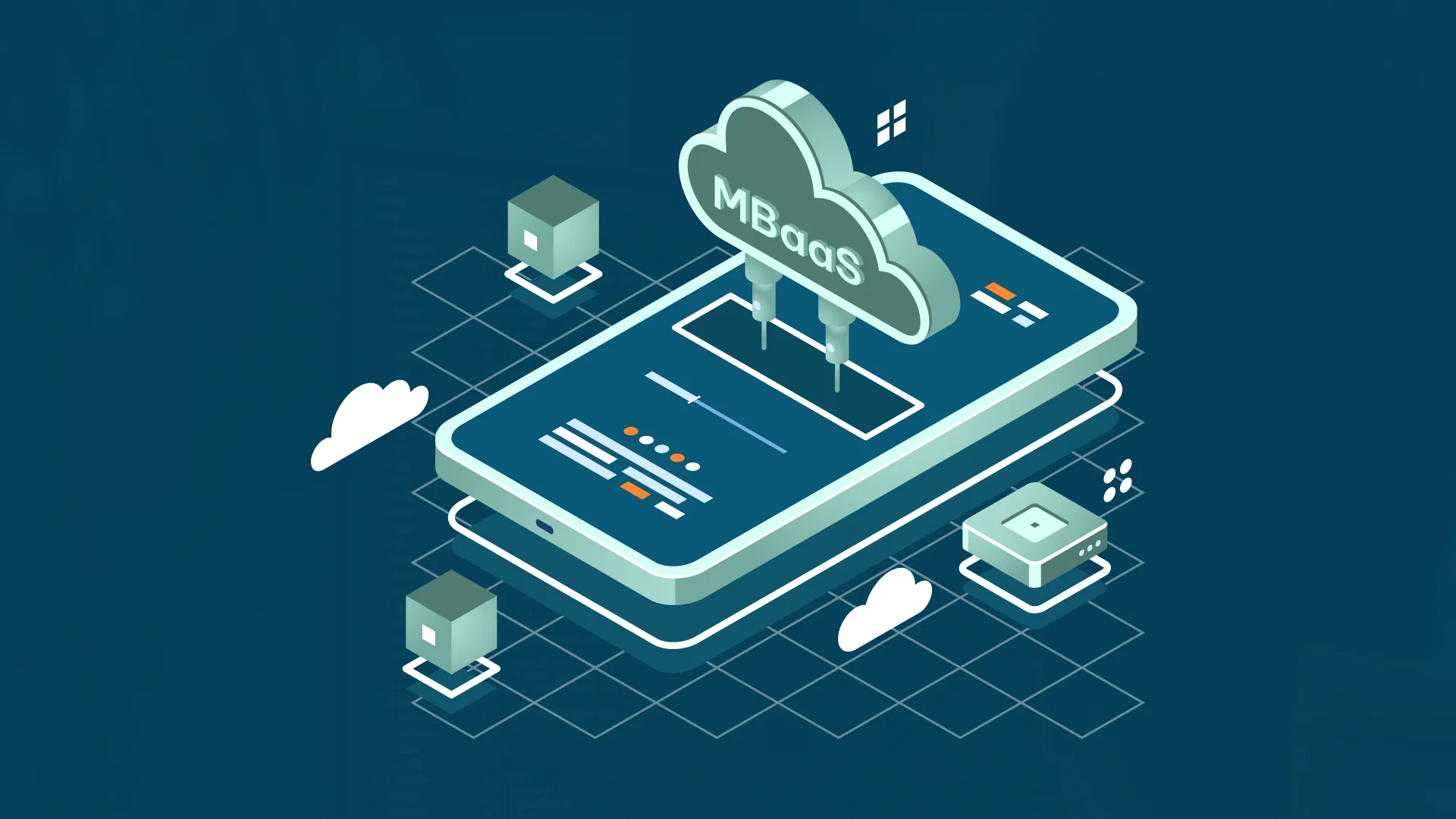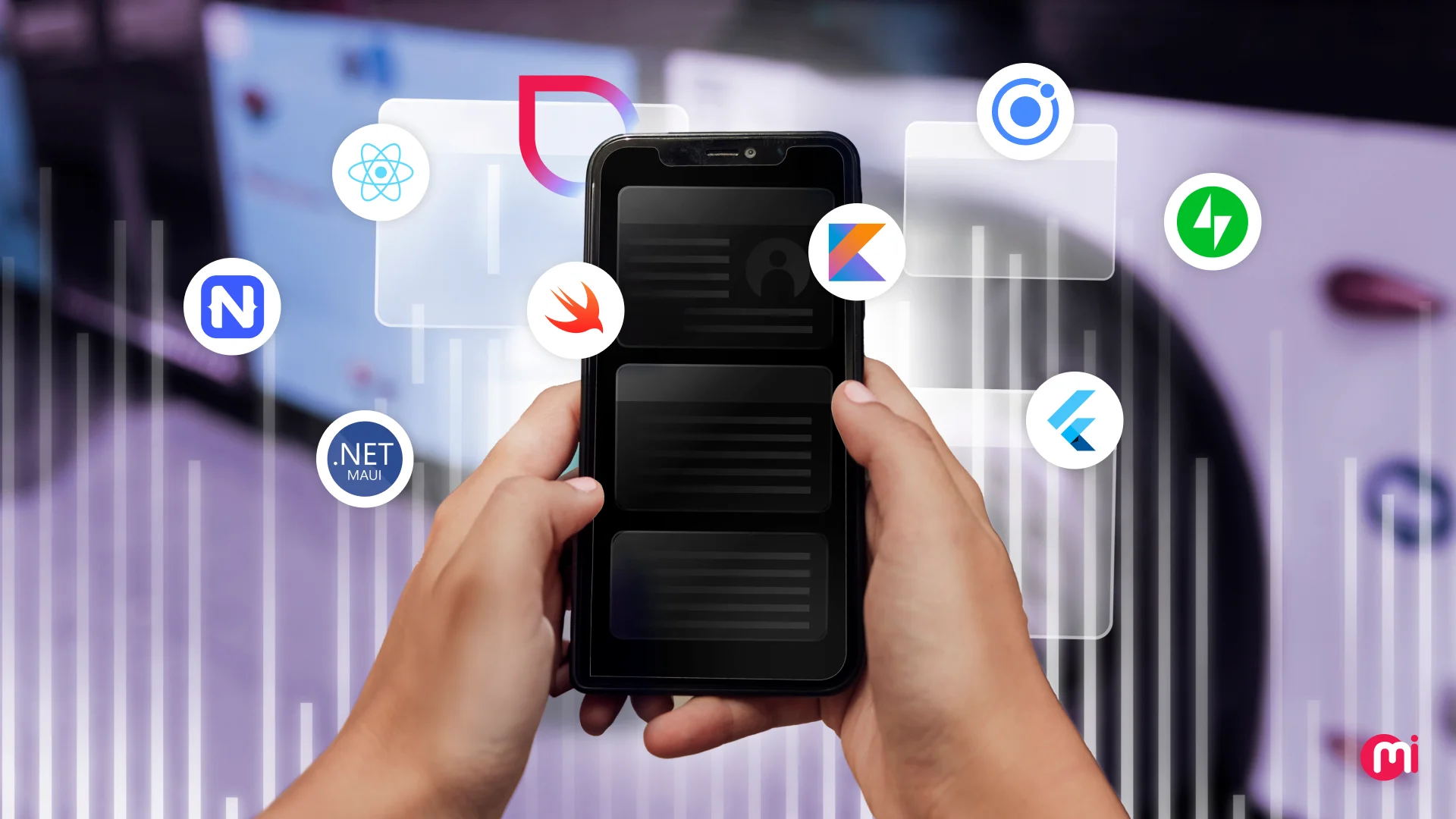Mobile Backend as a Service: Why Should Your Business Choose MBaaS For App Development
- Mobile
- January 10, 2023
Curious about streamlining your app development process? How about choosing Mobile Backend as a Service (MBaaS)? But what it is, what part does it play in mobile app development, and how does it benefit the particular? This blog highlights everything you need to know about MBaaS, from concept understanding and benefits to downsides.
Gone are the days when creating a backend for mobile applications was one of the monotonous tasks mobile app developers had to do. Mobile backend as a service (MBaaS) providers are here to help you with efficient backend development services.
Well, our topic for today is all about MBaaS; its benefits; the usage of MBaaS, and every other important detail you need to know.
Excited and confused at the same time? Don’t you all worry! I am taking forward this topic covering all the details and information for you all mobile app developers to ultimately absorb the meaning and importance of Mobile Backend as a Service. But, before that, understanding BaaS is as crucial as MBaaS. Let’s begin learning.
What is Backend as a Service (BaaS)?
BaaS aka backend as a service is nothing but the cloud service model that handles all the behind-the-scenes processes and elements of any web or mobile application. This only leaves developers with the task of writing and maintaining the code for Frontend.
When it comes to BaaS services, the BaaS service providers are responsible for offering servers like user authentication, remote updating, database management, and push notifications for mobile applications along with cloud storage and hosting.
But, let me make things more interesting for you. So that you can get an in-depth idea about BaaS. Imagine you are planning to launch your own cafe; your core responsibilities are to arrange all the grocery and other miscellaneous stuff, all the appliances for brewing and serving beverages, manage the space to ensure everyone is sitting comfortably, and so on. And that is just apart from the actual job, which is taking care of profit and losses along with managing the budget.
But, what if you could opt for a service provider that could help you handle all your core responsibilities so that you can primarily focus on managing finance? That is exactly what BaaS helps you with; not funding, but managing the backend services to help you take care of Frontend only. So, developers, ready to explore Backend as a Service further? Let’s move:
BaaS allows developers to focus on writing the frontend application code. But APIs are a method of programming to make a request for another program and SDKs are kits for creating software offered by the BaaS provider. They are able to integrate all the backend functionality they require, without having to create the backend themselves.
Moreover, developers also don’t have to cope with servers, virtual machines, or containers in order to let the application run smoothly. As a result, they can build and launch mobile applications and web applications (including single-page applications) more quickly.
What is MBaaS?
Now that you have got a profound understanding of the concept of backend as a service; MBaaS is nothing but a specific platform for mobile applications that are also known as Mobile backend as a service.
There have been a lot of differences of opinion regarding these two concepts. That’s why I want you all to know what exactly an MBaaS provider helps you with and why you should opt for MBaaS as we proceed further. First, let’s learn about how MBaaS came into existence.
How Did the Concept of MBaaS Come Into Play?
MBaaS came into existence to meet the mounting demand for quality mobile apps, built in the least amount of time, without compromising on performance and data security.
Since incorporating individual features such as push notifications, cloud storage, location, mapping, orchestration, etc., each with its own API made the entire process time-consuming and complicated.
As the name suggests, MBaaS was built and brought to be availed seeing the rising demand for quality mobile applications that are created within the minimum timeline, that too without compromising the seamless performance and data security.
But adding features like push notifications, cloud storage, location, mapping, orchestration, and what not; calls for a sufficient timeline if you have to get the job done aptly as this process is not easy to implement.
This, in turn, gave birth to the pressing requirement of a seamless business model that is eligible for providing the desired way to cope with the backend data. So that developers do not have to create their own backend for each of their applications.
MBaaS specializes in solving the issues and requirements related to cloud computing with the unified means of connecting mobile applications to cloud services.
MBaaS’s key feature is to create top-notch applications that too within a short period of time. Not only that, Mobile backend as a service gives the opportunity to avail the fantastic benefits of the latest features along with managing complex service commands for delivering an apt user experience rather than dealing with monotonous backend infrastructure.
How Does MBaaS Work for the Developers?
Generally, when developers build an application; it consists of 2 key elements: one is the frontend, the interface of the application, and the other one is the backend that contains all the information of infrastructure and features of the app.
Talking about an app that users generally appreciate apps that are developed with a great user interface as it is a pretty essential aspect of every application. But the thing is that the user interface can’t be the same for every app, it varies according to the theme of applications.
In order to create a different user interface, the developers are supposed to develop a different interface for all the applications. However, this process is not required to be done for the backend of the app.
With the usage of MBaaS, the developers can use the little components that are provided by MBaaS, and these components are similar to the different features that are integrated into every app.
If we talk about the different features of the app, MBaaS offers features like business logic features and data processing features. The key goal is to help with the best user experience, along with the interface of the application.
Well, it’s not done yet. The best part for developers using MBaaS is the features and components do not take a lot of time to be integrated into the application in APIs. This ultimately makes the process of Backend development easy and time-saving.
Let’s learn what is the key difference between creating your own backend vs. MBaaS:
MBaaS vs. Creating Your Own Backend
Let’s learn about the 5 key points that will clear the differences between MBaaS and custom backend development:

These are the key differences between MBaaS and independent Backend development.
What Makes MBaaS a Top Choice for Mobile App Developers?
Here are the top reasons why MBaaS is a top choice for mobile app developers, read further to check it out:
1. Cloud Storage
MBaaS services also include the provision of cloud storage for developers which allows them not to go for buying internal servers while continuing to make the backend for the client applications.
Otherwise, separate cloud services like data storage, logic storage, file storage, and whatnot make businesses foot the long bills, but MBaaS has helped businesses with all the services under one roof.
Generally, in the process of backend development, the images and files that are quite heavy are included in the client application. MBaaS lets you store these items in the cloud by making it simply accessible for the developers to get these files. The files can be accessed in a shorter period with a file service API or in the MBaaS user interface.
2. Creating Business Logic
Every mobile application has a business logic that makes it unique from the other applications along with offering the desired user experience. This generally consists of user data management, running backend computations, and releasing up some memory.
Also, implementing artificial intelligence and machine learning algorithms help you make mobile apps personalized with predictive analysis, robust security, data mining, and fraud detection.
3. Help you save time spent on tedious tasks
With the usage of MBaaS, the app development teams can put more focus on developing unique features, working on client-side logic, and revamping the interface to offer an ace user experience.
With MBaaS, the development team does not have to spend time on trivial activities any longer, like managing databases, handling servers, or developing APIs.
4. Cross-Platform Data Morphing
MBaaS lets the developers morph data for cross-platform delivery. Because the applications are compatible with multiple client-side platforms (Android, iOS, and others), these applications receive the data in multiple formats from each platform.
The conventional method is when MBaaS providers would deliver all the data to the client applications in JSON, so developers had to organize that data in order to perform application-level processing.
However modern MBaaS providers perform this process of transformation automatically without any additional setup.
This allows mobile app developers to deploy applications to multiple mobile platforms with a single backend code base. Also, it arranges all backend development into a single development environment so that beginners (developers) do not find it confusing.
5. Cost-effective app development
When the mobile app development team chooses to develop the app with MBaaS solutions, they get to witness a relative difference in pricing as MBaaS is pretty budget-friendly.
Also, developing with MBaaS does not require a huge team of developers; a few developers working on the app are more than enough. This helps you save a lot of time when you have an in-house team of developers, you can have them focus on different tasks.
MBaaS also helps you to a great extent when you outsource the developers by helping you save ample money.
6. Allows third-party integrations
With the Mobile backend as a service, businesses do not need to think about the compatibility of the backend servers with third-party apps like Twitter, Slack, and Facebook.
While developing the backend from the very beginning, enabling third-party integrations could be really challenging. But MBaaS helps you with that already.
7. API management
API management could be kind of a time-consuming process for the developers. Well, the mobile backend as a service provider helps you with API management in various ways.
One of them is a mobile app developer who can develop and test a number of APIs on their own and then they could take the help of MBaaS for the final implementation.
Another way of API management through MBaaS is the tools the provider offers to test the API as a part of its package. So, you can easily do the API management with the help of MBaaS without consuming a longer period of time on the same.
8. Custom SDKs
Mobile Backend as a service providers make use of custom SDKs aka software development kits to connect APIs with the frontend server of the clients, whether it is iOS or Android.
This also means that custom SDKs are pretty compatible with mobile app development frameworks like React Native, Ionic, Flutter, Ionic, and so on.
9. Smooth frontend integration
The smooth frontend integration is the reason for the custom SDK features and APIs, as MBaaS allows seamless frontend integration with frontend servers. Smooth frontend integration is quite an important feature as the development in the backend server has to work smoothly and facilitate the UI of the application.
10. Database Management
Some MBaaS providers also include database management services. Generally, an MBaaS provider can interact with users’ databases, and at times, it can help you with the database created within the platform.
Certain popular mobile Backend as a Service providers like Azure and Firebase offer database management and services.
Now that you have learned about the top 10 reasons to opt for Mobile Backend As A Service, let’s also learn in which situations or conditions MBaaS should not be used.
What are the Downsides of MBaaS?
Let’s learn about the common downsides of MBaaS below:
Less control over applications
The applications that are developed using BaaS do not offer complete control to the owner as of the server management. Certain services are under the authority of your BaaS provider.
Shifting between different providers is not really possible
If you have developed the application with one BaaS provider and you are not satisfied with the features or you require some changes to be done, then there is probably no way by which you can switch between the BaaS providers with the same application. You will need to develop the application all over again.
Not perfect for major projects
Not every Backend as a Service provider is a perfect choice for a massive project. So, if you are up for a big project, you must choose providers like AZURE or Firebase.
Taking a look at these 3 common downsides of MBaaS, now it’s time for you to learn how to go for an apt MBaaS provider.
What Points to Keep in Mind While Choosing an MBaaS Provider That Suits Your Requirements?
Here you will learn what points you should keep in mind when you are choosing an MBaaS provider for your mobile app development project:
- Ease of use is the most important aspect to consider.
- The provider should guarantee security storage in the server-side code, files, databases, etc. on the cloud.
- The MBaaS should offer a thoroughly-tested architecture for the database and transaction processing abilities required for a mobile app.
- Your MBaaS provider should definitely provide you with APIs to connect your app to the multiple cloud services you need.
- Ease of backend data management is critical. The provider should deliver the right processes, methods, and tools for the same.
- Interaction between users and servers must be highly-secured.
- Robust technical support is a must.
- Doing business with the provider should be seamless and easy
When to use MBaaS?
So far, we have learned about the top 10 features of why mobile app developers should use MBaaS, now let’s learn where and when its application would be found the best:
When you are developing a Minimal Viable Product, in such cases developing a basic version of the app calls for something like MBaaS. So, MBaaS is an apt choice for the same.
If your team is planning to develop basic applications with simple architecture, using MBaaS in such cases is an apt solution.
Creating enterprise applications with MBaaS is also a good idea, you can go for MBaaS when you are planning for enterprise app development.
Top Mobile Backend as a Service (MBaaS) Platforms

Here are the top platforms that mobile app development companies choose for their apps:
1. Firebase
Google acquired Firebase back in 2014 and effectively commenced its existence in the growing MBaaS space with it.
Google Firebase offers low data transfer charges, various cloud functions, and other functionalities that make it easy to create, support, and launch mobile apps. The Firebase No-cost Spark Plan doesn’t cost you a lot, but it comes up with certain limitations as well.
Read also: The Benefits of Having Firebase for Mobile App Development
2. AWS Amplify
Mobile app developers can use Amplify CLI or Amplify Studio to configure the backend of an app and avail the UI components and Amplify libraries to link the application to the backend. You can use Amplify Hosting to host your front-end web app and build backend environments.
Additionally, AWS Amplify features User management and Content management to cope up with authenticated users and update the app data.
3. Apple CloudKit
Apple CloudKit was released back in 2015, and if you are looking for an iOS backend as a service, this is the perfect platform for you all. It’s pretty smooth and simple to integrate with other iOS apps when you use CloudKit.
You can also get a free tier, and you begin to incur charges only when you cross the threshold. The CloudKit dashboard allows you to review the server activities of your app. It also allows you to keep an eye on trends and measure parameters like user engagement and bandwidth usage.
CloudKit is an apt platform when you want to create simple apps.
4. Backendless
Backendless offers many features to help achieve your mobile app development objectives. It authorizes frequent backups and multiple developer onboarding along with ensuring required security with an SSL certificate.
Owners can raise or remove limits on paid plans by purchasing a corresponding function pack from the Marketplace.

Wrapping it up
MBaaS is a great concept to be adopted by mobile app developers but at the same time, we have to remember one thing-everything in this world has a downside along with advantages. It just depends on your requirements and the compatibility of the service you are opting for.
If both match well, then you are good to go. Also, you can always opt for steadfast technical assistance to help you guide your mobile app development process. With proper guidance, you are no longer directionless and attain your goals.
FAQs on Mobile Bankend as a Service (MBaaS)
Back4app, Firebase, Express.js, Laravel, Django, etc. are the most popular backend servers for mobile application development.
MBaaS enables mobile app developers to focus on building their apps instead of worrying about infrastructure. This helps them save ample time, that too with a cost-effective budget.
BaaS is all about the backend as a service whereas MBaaS is specifically about mobile- mobile backend as a service. That is the only difference between MBaaS and BaaS.













